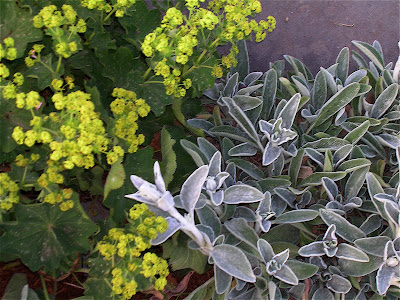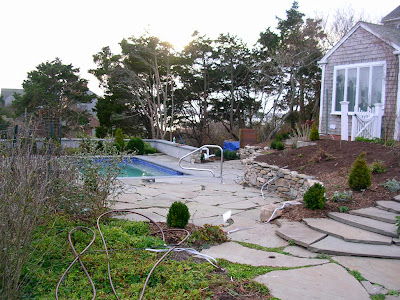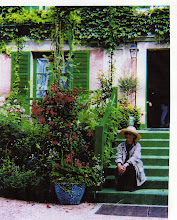
Sorry for the gap in time - just a quick check in at the end of summer 2010 season. Last year we were left asking "that was summer?" because of the cool, rainy, fungus filled season. This year we certainly knew it was summer - record breaking heat starting in May - and of course accompanied with the famous east coast humidity.
It has been a exhausting season for both gardeners and for the plants - when the august plants started blooming in July the big question was "what will we have for August?" Think this must be like gardening in Florida where you spend most of your time cutting things back.
Back to my favorite garden style - build in great foliage - color, texture, form - because sometimes you just aren't going to have flowers regardless of how you planned to cover the season. An all foliage garden should have as much excitement (tho quieter) as a flowering garden. Shade gardens are great in this department as you get delightful "white" leafs, nice purples, good limes that love the shade.
Not that sun gardens are shy on foliage selections - the Artemesias are great for light color and texture contrasts, lots of purple leafed plants & limes -
I also added many beautiful Asters - usually a September flower - for our August color.
The veggie garden is picking up - all that "lasagna" work we did last winter is paying off with a much deeper soil this year - good yields on everything - can't believe my Tomato crop - a first for me in my cool microclimate.
I've a huge compost pile that will go in there come November - covered in black tarp to cook it over winter.
Also got in some late season seeding that I plant to cover with "winter blanket" - expect I can harvest well into January if not longer - a more mild winter is predicted for us this year - with this summers heat that makes me sad as I've been looking forward to cool, clean snow and piles of it! Might also mean more bugs and disease - so keep an eye out and be sure to get your dormant spray on woody plants.
Off to finish my Beach Plum jelly!
I'll dig around for some photos - or head out to take some to illustrate







































